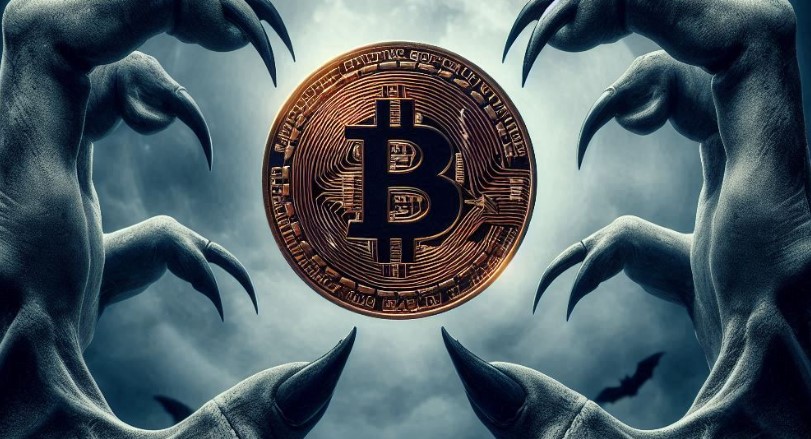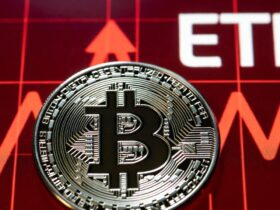The ECB, the FED and the IMF reflect fear and lack of understanding about the potential of Bitcoin.
El Salvador moves forward with Bitcoin, challenging the status quo, as the IMF seeks to limit its advance.
In recent days, Bitcoin has once again come under intense scrutiny from prominent institutions in the traditional banking and financial system. Analysis by the European Central Bank (ECB) and pronouncements by the Minneapolis Federal Reserve have placed the first of the cryptocurrencies in a critical light that, although not surprising, is disturbing in its context.
This new onslaught by anti-bitcoin villains not only highlights how the traditional financial system reacts to the advance of disruption. And at the same time, it reveals a lack of understanding about how Bitcoin actually works and is positioned in our contemporary society.
The recent ECB document, titled “The Distributional Consequences of Bitcoin,” is one of these manifestations. The authors, Ulrich Bindseil and Jürgen Schaaf, criticize Bitcoin for its potential to “impoverish the rest of society.” In his analysis, a bias is evident that interprets that regardless of the price of Bitcoin, this asset is nothing more than a threat to society and economic stability.
So, a question arises: is it really fair to blame Bitcoin for problems that have persisted in our economic systems long before Satoshi Nakamoto’s invention saw the light of day? With their approach, ECB analysts seem to forget that the history of the world is full of innovations that were initially seen as risks and that, over time, turned out to be fundamental for progress.
In itself, the ECB mentions the fact that the first users (close to the issue) will capture more value than those further away from the source of the issue. And they propose banning Bitcoin, with the pretext that it will impoverish non-owners.
It seems that they forgot an economic concept well known by the fiat system. This is the Cantillon effect, which emphasizes that those who receive new monetary funds first (often banks and financial elites) benefit from greater purchasing power, while others, further away from the “source”, suffer from increased purchasing power. the prices.
It is a possibly unintentional irony, in which the ECB now finds itself facing its own version of the Cantillon effect, but this time, it says that Bitcoin is the cause of this effect, without looking towards the fiat system that has evidently contributed, in largely to economic inequality.
El Salvador and its adoption of Bitcoin: the IMF’s nightmare
In this context, in which criticism of the digital currency resurfaces, we cannot ignore the insistent warnings from the International Monetary Fund (IMF) regarding the adoption of Bitcoin by El Salvador.
Since El Salvador’s historic decision to adopt Bitcoin as legal tender three years ago, the IMF has been one of the most critical voices. Although the institution has admitted that the initially predicted risks have not materialized, its effort to reduce El Salvador’s exposure to Bitcoin continues to resonate in international economic circles.
IMF spokesperson Julie Kozack reiterated recommendations to “reduce the scope of the Bitcoin law” during a recent press conference, while emphasizing the need to strengthen regulation of the cryptocurrency ecosystem.
This position of the IMF seems to be more focused on protect the interests of the traditional financial system than in recognizing the transformative potential of Bitcoin. While the world watches as El Salvador tries to build a new economic path, the IMF clings to a model that does not benefit the majority, instead of objectively evaluating the progress that has been made.
The narrative that Bitcoin is the villain behind economic problems is therefore a simplification that ignores a number of complex factors. What is happening in El Salvador with Bitcoin is a bold experiment in a world that has been caught in the US dollar cycle. And despite criticism, the country continues to advance on its path towards greater economic independence.
And meanwhile, from the Minneapolis Federal Reserve, analysts Amol Amol and Erzo Luttmer suggest a “legal ban” on Bitcoin, labeling it as a “useless piece of paper”. Although their criticism is echoed throughout a narrative that fears the unknown, They ignore the revolution that Bitcoin is orchestrating in the financial sphere.
The characterization of Bitcoin as an asset with no intrinsic value is superficial at best. It is a lack of vision that does not fully understand its potential as a form of refuge and economic freedom.
However, it is clear that institutional biases compromise the credibility of these reports. Although this is where the real battle lies: resistance to change on the part of those who benefit from the traditional system faces a financial revolution that seeks decentralization and inclusion.
Therefore, the discourse surrounding Bitcoin goes beyond the financial, as it is about how we conceive ownership, value, and the economy as a whole.

What can the horsemen of the financial apocalypse tell us about Bitcoin?
That institutions such as the ECB, the Federal Reserve and the IMF issue alerts about Bitcoin is something that invites deep reflection on the role these institutions play in the global financial system. This is particularly so because their actions often lead to unpredictable consequences, creating a cycle of crisis and inequality that challenges societies.
In the vast landscape of the global economy, few institutions have had as significant an impact as the ECB, the US Fed and the IMF. However, based on the result we can metaphorically say that These are the horsemen of the apocalypse of the traditional financial system.
The intervention of the IMF, the ECB and the Fed during economic crises is an undeniable aspect of their functioning. In times of tension, these institutions deploy various measures aimed at “stabilizing faltering economies.” However, these interventions can imply severe conditions of austerity, bank bailouts and unpopular reforms that, although they seek immediate stability, can trigger adverse effects for the population in the long term.
Expansionary monetary policy is a tool commonly used by the ECB and the Fed. They say that with their measures they seek to stimulate economic growth, but in reality they have unleashed economic imbalances that, once burst, generate deep and lasting crises.
Creating conditions conducive to future crises can cause these institutions to be seen as architects of an unsustainable destiny, evoking the image of horsemen advancing unstoppably towards chaos.
The policies implemented by these institutions have also been criticized for their tendency to benefit the financial sectors to the detriment of the working classes. In an environment where economic inequality worsens, social polarization becomes an alarming phenomenon.
The accumulation of wealth in the hands of a few, while the great masses face economic difficulties, suggests a social apocalypse, where the cohesion and stability of societies are deeply threatened.
Not satisfied with this, countries that resort to IMF assistance often have to adopt structural reforms that can compromise their economic sovereignty. This type of dependency not only weakens the ability of governments to make decisions for the benefit of their citizens, but also weakens their economic autonomy, painting a gloomy image that resembles the arrival of horsemen who bring chaos and destruction. So external intervention, far from being a solution, can perpetuate a cycle of vulnerability.
In short, The decisions taken by the ECB, the FED and the IMF can have global repercussions. Instability generated by irresponsible monetary policies or poorly informed fiscal decisions spreads rapidly between interdependent economies, causing crises on multiple fronts. This interrelationship highlights a financial system that, like the horsemen of the apocalypse, can wreak havoc on a global level.
It smells like fear
Bitcoin critics are not villains by nature, but their arguments are often driven by fear and lack of adaptability. Instead of being seen as adversaries, those who oppose Bitcoin should be seen as reminders that innovation will always be surrounded by skepticism. Criticism must be constructive and informed, and requires a deep understanding of modern economic dynamics.
As bitcoin adoption increases across the planet, it is imperative that those in positions of authority and leadership recognize their responsibility to foster informed and honest dialogue about the future of the most popular cryptocurrency on the market.
At the end of the day, the villains are not those who see Bitcoin as a threat, but those who They ignore the vast benefits it could bring if allowed to operate without severe restrictions. As we move towards bitcoinization, resistance to change will only delay the inevitable: the emergence of a more inclusive and equitable financial system.
The thing is that the debate about Bitcoin is not just about the cryptocurrency itself, but about the future we can build as a society.
Recall what macroeconomist Lyn Alden said recently: “if a decentralized spreadsheet is a serious threat to core systems, that shows how weak those systems are.” Therefore, the reactions of traditional institutions to a system like Bitcoin, evidence that what is spreading is the imperceptible, but powerful smell of fear of Bitcoin by the traditional financial system.
Disclaimer: The views and opinions expressed in this article belong to its author and do not necessarily reflect those of CriptoNoticias. The author’s opinion is for informational purposes and under no circumstances constitutes an investment recommendation or financial advice.






Leave a Reply